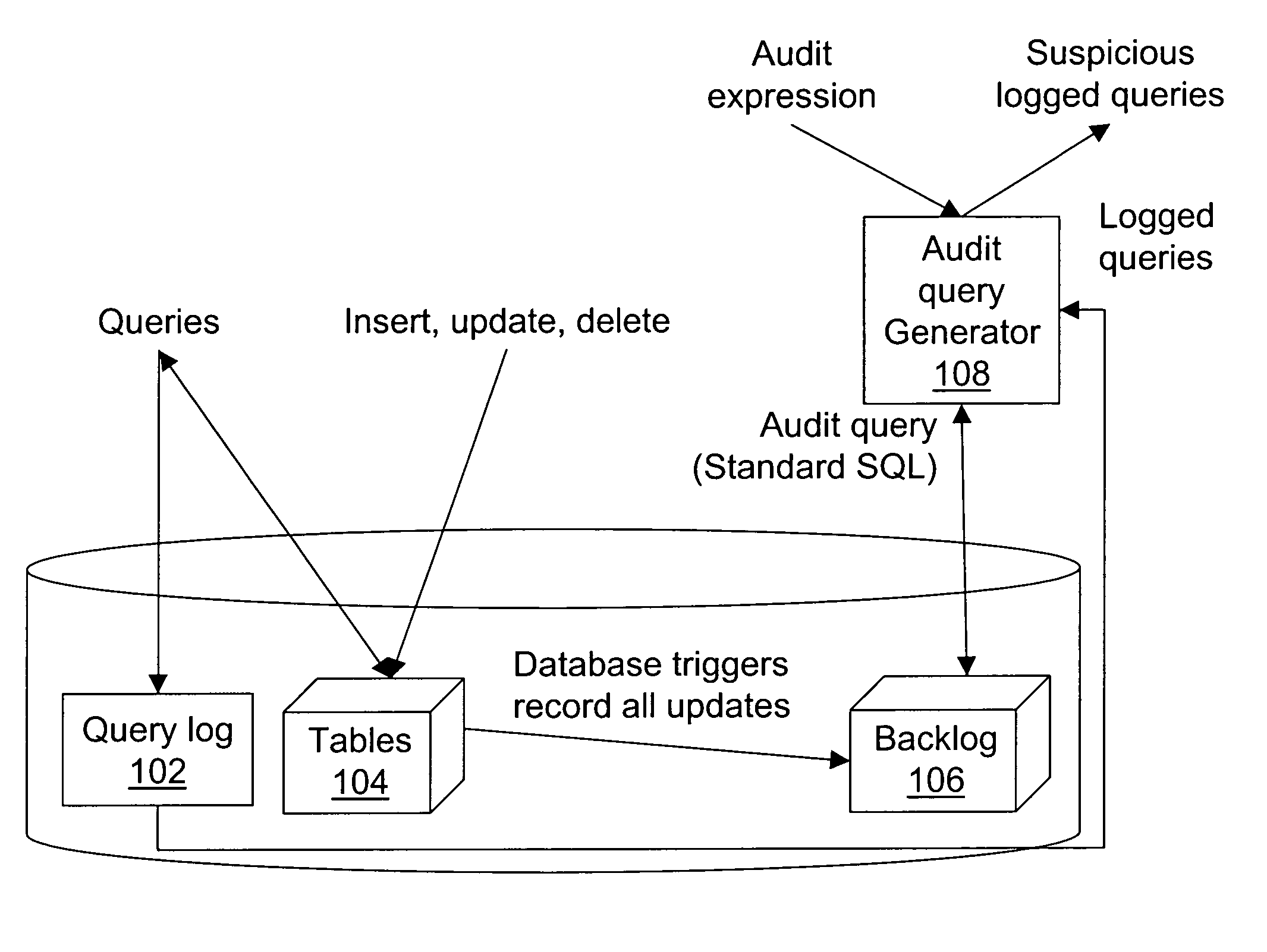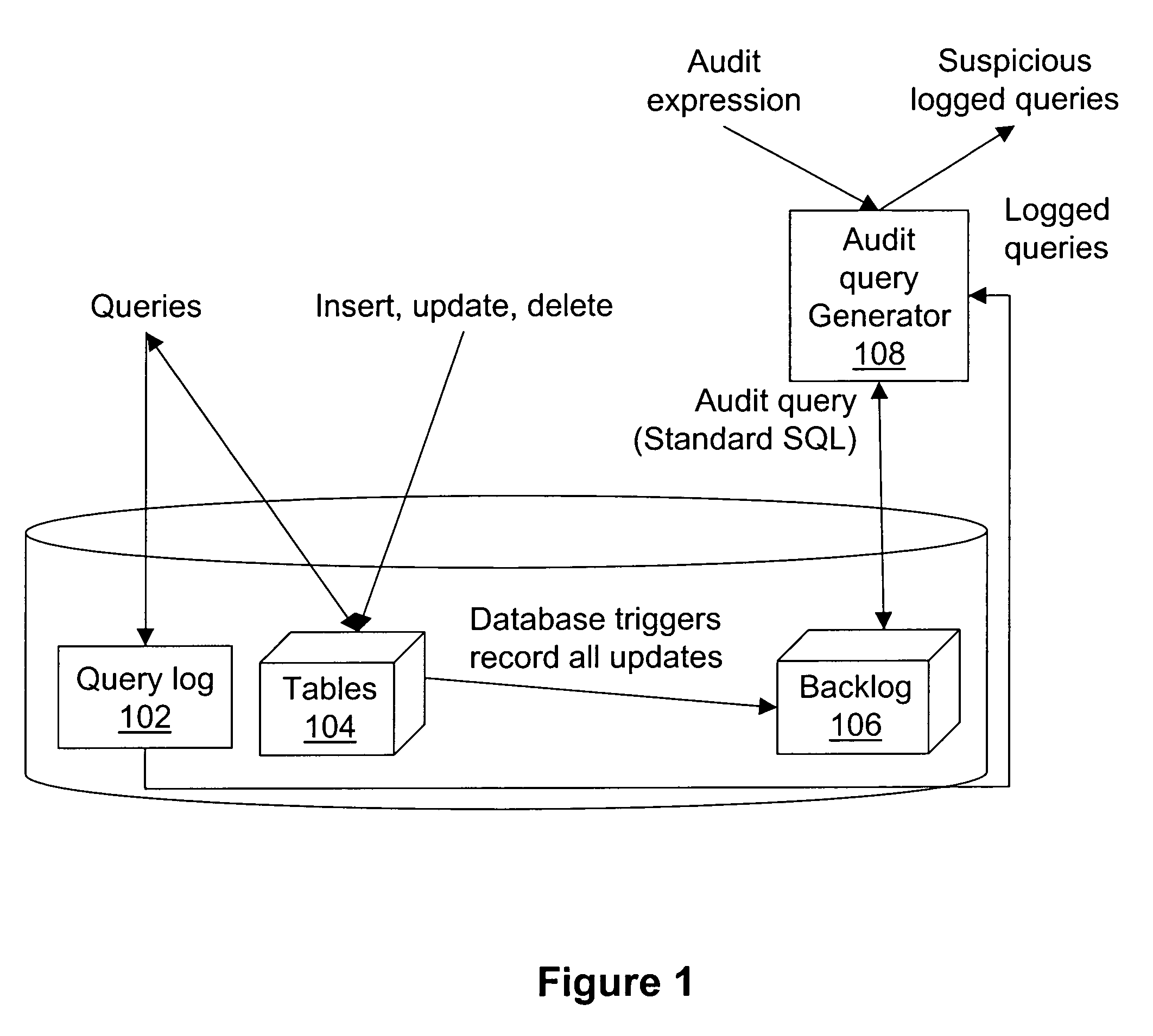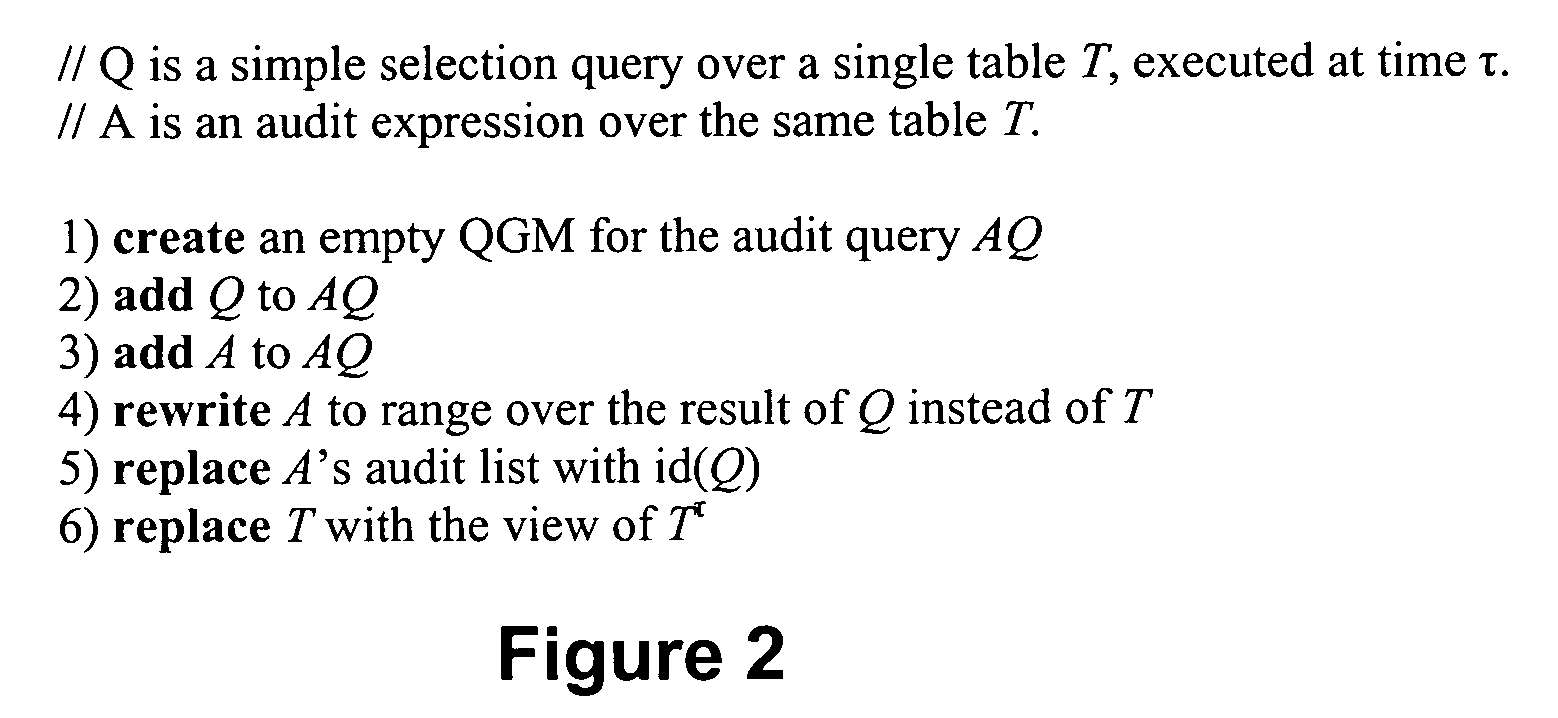Auditing compliance with a hippocratic database
a hippocratic database and compliance audit technology, applied in the field of auditing compliance, can solve problems such as burdening normal query processing with excessive overhead, using audit trail to ascertain compliance is unsatisfactory, and straightforward approach
- Summary
- Abstract
- Description
- Claims
- Application Information
AI Technical Summary
Benefits of technology
Problems solved by technology
Method used
Image
Examples
example 1
e of disease information of anyone living in the ZIP code 95120 needs to be audited. Here is the audit expression:
[0056]audit disease[0057]from Customer c, Treatment t[0058]where c.cid=t.pcid and c.zip=‘95120’
This audit expression marks the cells corresponding to the disease column of those tuples in the Customer*Treatment table that have c.cid=t.pcid and c.zip=95120. Any query that accesses the disease column of any of these tuples will be considered suspicious.
Informal Definitions
[0059]Indispensable Tuple—ind(t,Q)
[0060]A tuple t∈ U is indispensable in the computation of a query Q, if its omission makes a difference.
[0061]Candidate Query—cand(QA)
[0062]A query Q is a candidate query with respect to an audit expression A, if Q accesses all the columns that A specifies in its audit list.
[0063]Suspicious Query—susp(Q,A)
[0064]A candidate query Q is suspicious with respect to an audit expression A, if Q and A share an indispensable tuple.
example 2
the audit expression A in Example 1 and the following query Q
[0065]select address[0066]from Customer c, Treatment t[0067]where c.cid=t.pcid and t.disease=‘diabetes’
Q is a candidate query with respect to A as it accesses the disease column that A is auditing. Consider the Customer*Treatment table. Clearly, tuples that match the join condition and have diabetes in the disease column are indispensable for Q. Similarly, tuples that match the join condition and have 95120 as the zip code are indispensable for A. Therefore Q will be deemed suspicious with respect to A if there was some customer who lived in the ZIP code 95120 and was also treated for diabetes.
Example 3: Consider the query Q from Example 2 and the following audit expression A:[0068]audit address[0069]from Customer c, Treatment t[0070]where c.cid=t.pcid and t.disease=‘cancer’
Q will not be deemed suspicious with respect to A because no tuple in Customer*Treatment can simultaneously satisfy the predicates of Q and A. But how ...
example 6
Candidate query Q: Retrieve all customers in ZIP code 95120.
[0128]select*[0129]from Customer[0130]where zip=‘95120’
Audit expression A: Find queries that have accessed Alice's name and address.[0131]audit name, address[0132]from Customer[0133]where name=‘Alice’
FIG. 3a shows the state of the QGM graph after line 3 of FIG. 2. A new QGM structure for the audit query AQ is created and both the candidate query Q and the audit expression are added to AQ. FIG. 3b shows the state of QGM after line 6 of FIG. 2. Line 4 of FIG. 2 changed the audit expression's quantifier (range variable) C2 from ranging over the Customer table to ranging over the result of the query Q. As part of this transformation, each column referenced by C2 is changed to reference a column of Q's output. If a column referenced by C2 is not in the output of Q, it is propagated up from the customer table to be included in the Q's select list. Line 5 of FIG. 2 replaces the customer table with a view of the customer table at t...
PUM
 Login to View More
Login to View More Abstract
Description
Claims
Application Information
 Login to View More
Login to View More - R&D
- Intellectual Property
- Life Sciences
- Materials
- Tech Scout
- Unparalleled Data Quality
- Higher Quality Content
- 60% Fewer Hallucinations
Browse by: Latest US Patents, China's latest patents, Technical Efficacy Thesaurus, Application Domain, Technology Topic, Popular Technical Reports.
© 2025 PatSnap. All rights reserved.Legal|Privacy policy|Modern Slavery Act Transparency Statement|Sitemap|About US| Contact US: help@patsnap.com



